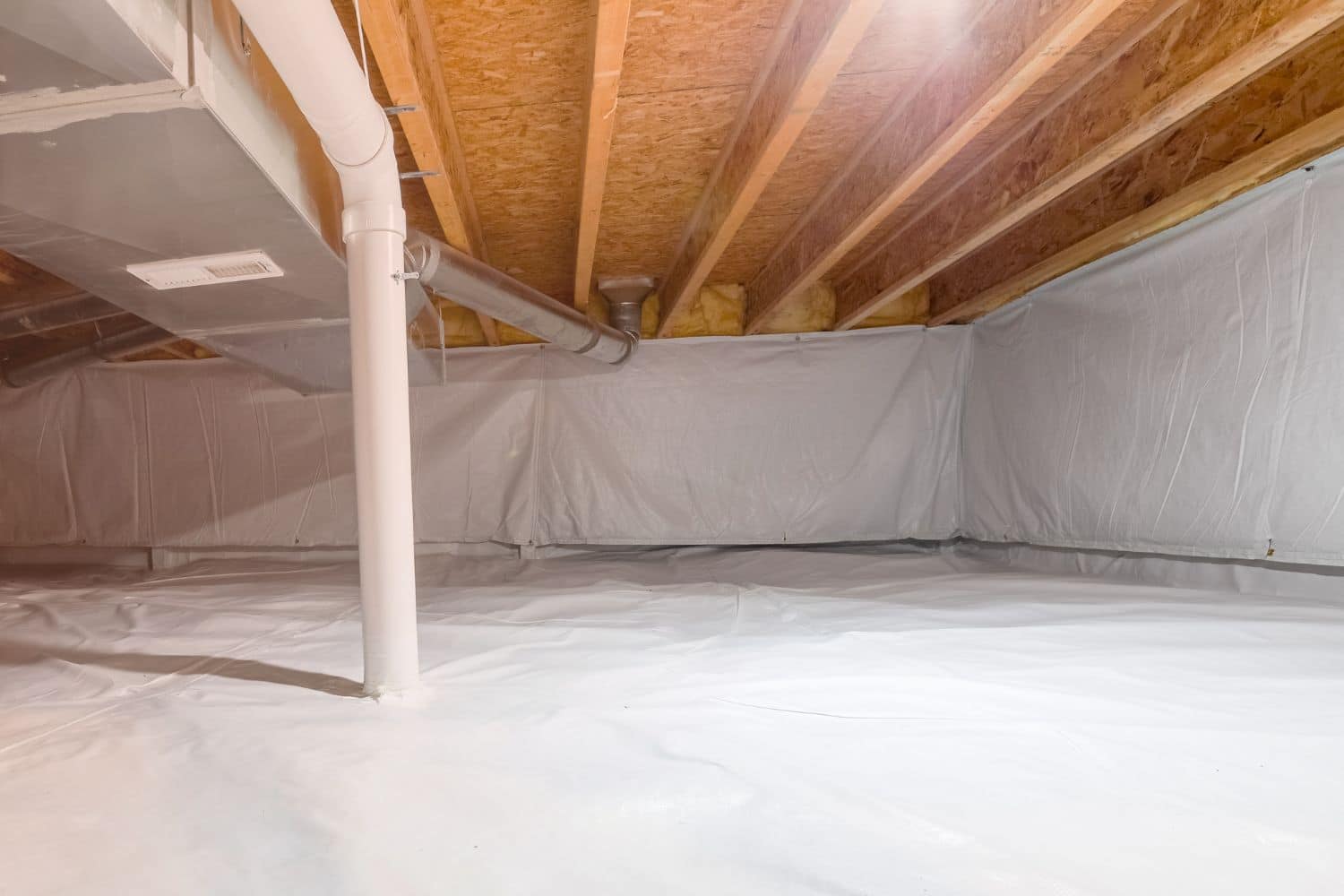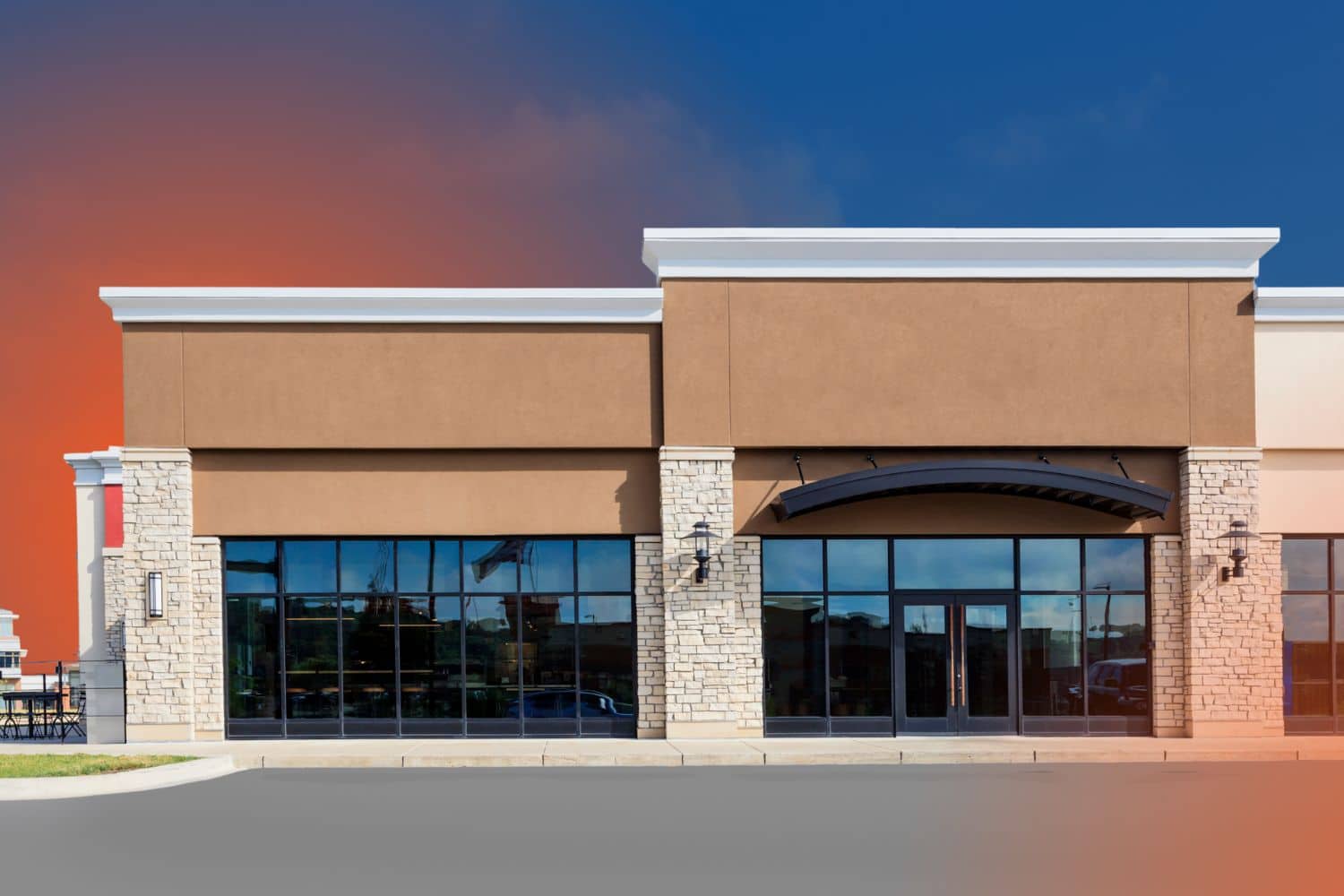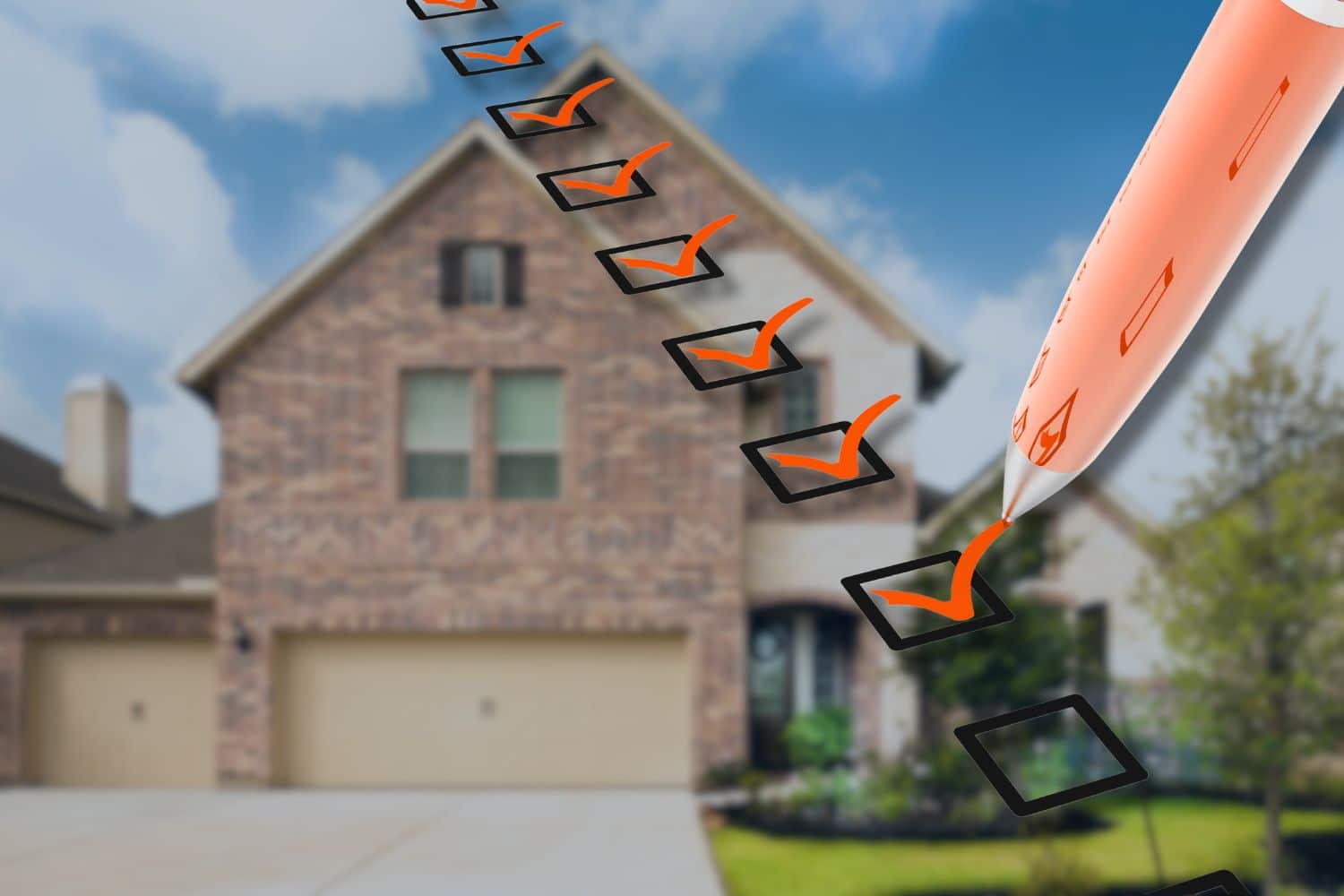If your crawl space is out of sight, it’s probably out of mind. But if your floors feel cold in the winter, your energy bills seem high, or you’re noticing musty smells from below, crawl space insulation might be the missing link. For homeowners in Central Texas, insulating a crawl space isn’t just about comfort.
It’s also about protecting your air quality, reducing moisture problems, and saving energy all year long. Let’s take a closer look at what crawl space insulation does, why it matters, and how to know when your home needs attention underneath.
Table of Contents
ToggleWhat Crawl Space Insulation Does
Insulation in a crawl space is meant to separate the temperature and humidity conditions below your home from those inside. Without it, outside air can easily enter through the crawl space, especially in vented setups or homes with air gaps in the subfloor.
Proper insulation acts as a barrier, helping to:
- Maintain consistent indoor temperatures
- Reduce strain on heating and cooling systems
- Prevent moisture buildup and condensation
- Discourage mold, mildew, and pest activity
- Improve overall energy efficiency
The U.S. Department of Energy notes that insulating crawl spaces can significantly reduce heat loss in winter and heat gain in summer, especially in mixed-humid climates like Central Texas.
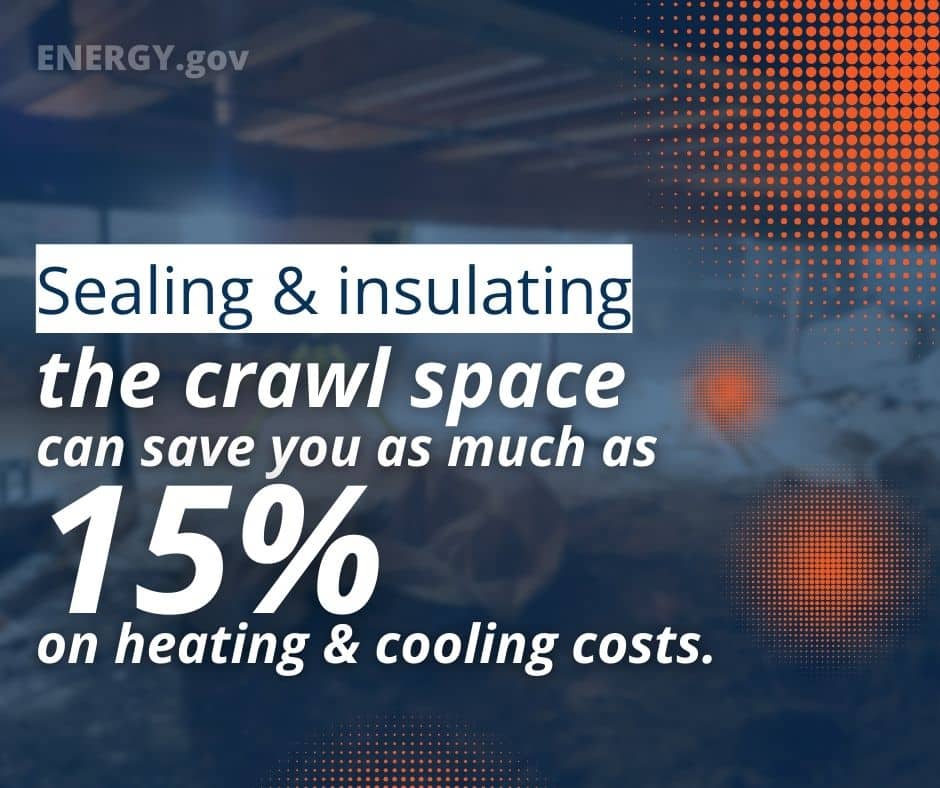
Why It Matters in Texas
You might assume crawl space insulation is more relevant in cold-weather states, but Texas homes face their own risks. Central Texas has a humid subtropical climate, meaning warm temperatures and seasonal moisture can wreak havoc on the home.
Here’s why it’s worth insulating a crawl space in this region:
- Humidity Control: Moisture from rain or ground vapor can lead to mold or musty odors if the crawl space isn’t sealed and insulated.
- Energy Efficiency: According to the EPA, air sealing and insulation can save homeowners up to 15% on heating and cooling costs.
- Comfort: Crawl spaces without insulation often allow hot, humid air to rise into the home in summer and cold air to seep in during winter.
- Pest Prevention: Rodents, insects, and even snakes are drawn to cool, dark, humid spaces. Insulation, when paired with vapor barriers or encapsulation, helps keep these intruders out.
Signs Your Crawl Space Needs Insulation or Attention
Your crawl space plays a bigger role in your home’s performance than most homeowners realize. Insulation is just one part of the equation. If your crawl space is not properly sealed, ventilated, or maintained, it can silently affect comfort, energy efficiency, and indoor air quality.
Here are some of the most common signs that your crawl space needs professional attention, including insulation upgrades:
Cold Floors or Room-to-Room Temperature Swings
When the crawl space is uninsulated or poorly sealed, floors above it often feel noticeably colder in winter. You might also find that certain rooms stay drafty or harder to heat and cool than others.
Unexplained Spikes in Utility Bills
Energy bills that seem high for the season could be a clue that your HVAC system is overcompensating for heat loss or moisture issues coming from below.
Persistent Humidity or Musty Smells Indoors
Moisture that enters your crawl space can work its way into the home through tiny cracks and gaps. If you’ve noticed a humid feel in the house, musty smells, or the need to run a dehumidifier more often, your crawl space could be the cause.
Visible Mold or Damp Materials Under the House
If you shine a flashlight into the crawl space and see mold on joists, sagging insulation, or signs of damp wood or standing water, that’s a clear sign that moisture is making its way inside.
Condensation on Ducts, Pipes, or Floor Surfaces
Cool air in contact with warm, humid crawl space air can cause condensation to form. This often shows up on ductwork, plumbing lines, or the underside of your subfloor.
Pest Activity in or Around the Crawl Space
Rodents, insects, and other pests are often drawn to warm, damp, and sheltered environments. If you hear scratching sounds, see droppings, or notice an increase in bugs inside the house, your crawl space might be the entry point.
Creaky, Sagging, or Uneven Floors
Structural movement caused by moisture damage or temperature swings under the home can affect floor joists and supports. If you’ve noticed soft spots in the floor or areas that seem to slope or dip, it may be time for an inspection.
Lingering Allergies or Respiratory Irritation Indoors
Poor air quality linked to mold, dust, or contaminated crawl space air can impact people inside the home. Because air from the crawl space can rise into living areas through a process called the stack effect, problems below your floor can directly affect your breathing space.
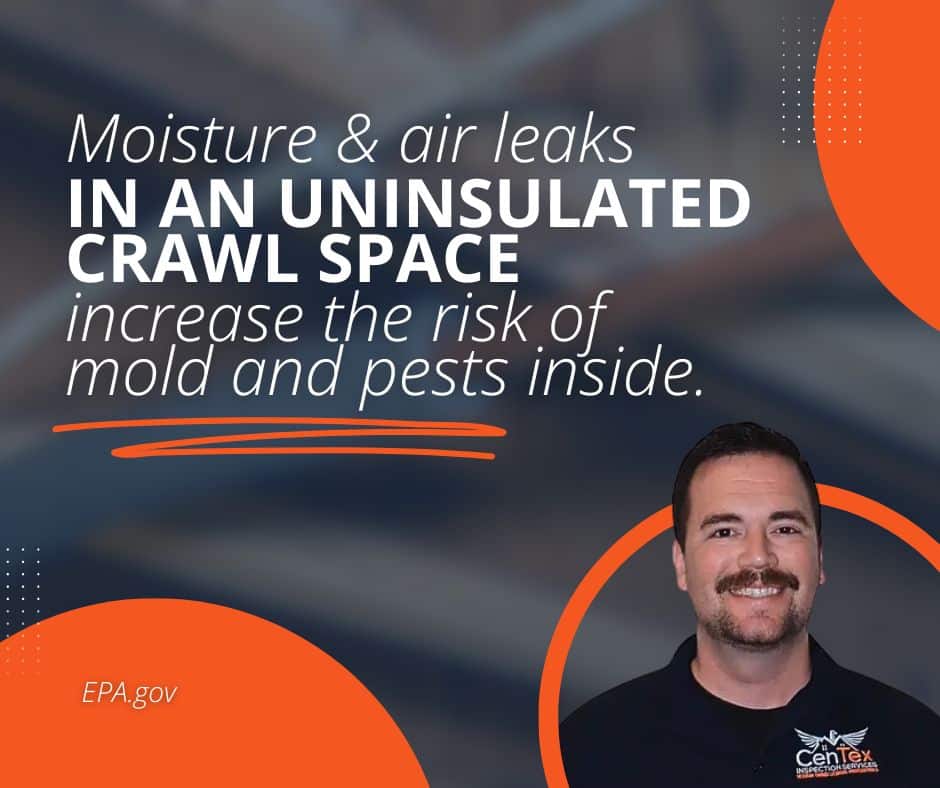
Related Questions Homeowners Ask
Do I need insulation if I haven’t had crawl space issues?
Yes. Insulating the crawl space helps you prevent future problems. Even without visible damage, it can improve air quality, lower energy bills, and protect your foundation.
What kind of insulation works best in Central Texas?
Spray foam and foam board usually hold up better than fiberglass in our climate. They resist moisture and mold, which is key in crawl spaces.
Should I get an inspection before insulating?
Definitely. Centex recommends a crawl space inspection first to check for moisture or drainage issues that need to be fixed before adding insulation.
Will insulation fix my cold floors or musty smells?
Often, yes. Insulation helps regulate indoor temperatures and reduce odors caused by moisture under the home.
Does Centex handle more than just insulation?
Yes. Centex can inspect and advise on vapor barriers, drainage, and other crawl space or foundation concerns as part of a full inspection.
When to Call a Professional
If you’ve never had your crawl space inspected, or if you’re seeing signs of moisture, pests, or temperature inconsistencies, it’s time to schedule a full home inspection.
Centex Inspection Services provides crawl space evaluations as well as complete home and property inspections to help Central Texas homeowners catch small issues before they become expensive problems.
Whether you’re buying a new home or maintaining the one you’re in, knowing the condition of the crawl space is a smart step toward protecting your property’s structure, energy efficiency, and air quality. Centex is here to help you make confident, informed decisions from the ground up.
Conclusion
Insulating a crawl space is one of the most overlooked ways to improve comfort, protect indoor air, and boost energy efficiency. This is especially true in Texas homes where heat and humidity are common. Whether your crawl space is vented, sealed, or somewhere in between, it plays a critical role in your home’s overall health.
If you’re noticing warning signs like high energy bills, musty smells, or inconsistent indoor temperatures, don’t ignore them. A professional inspection can reveal whether insulation is needed and what else might be going on underneath your home.

